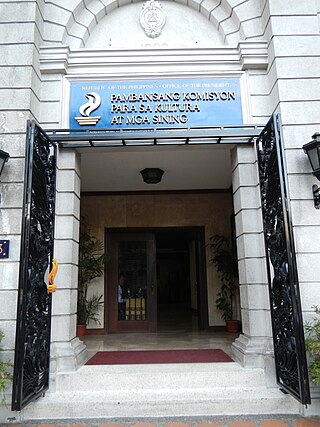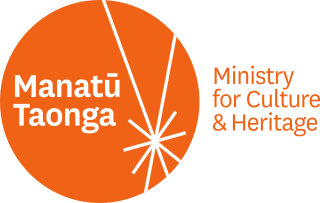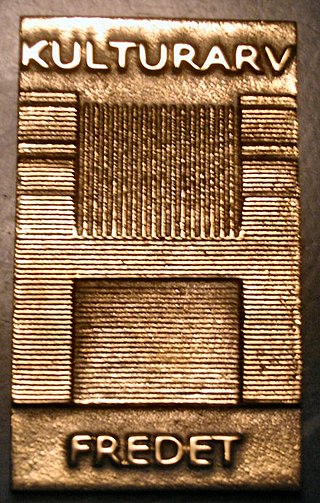Related Research Articles
In the broadest sense, cultural resource management (CRM) is the vocation and practice of managing heritage assets, and other cultural resources such as contemporary art. It incorporates Cultural Heritage Management which is concerned with traditional and historic culture. It also delves into the material culture of archaeology. Cultural resource management encompasses current culture, including progressive and innovative culture, such as urban culture, rather than simply preserving and presenting traditional forms of culture.

The Archaeology Museum of Catalonia is an archaeological museum with five venues that exposes the most important archaeological collection of Catalonia, focusing on prehistoric times and ancient history. The museum was originally founded in 1932 by the Republican Government of Catalonia. The modern institution was created under the Museums of Catalonia Act in 1990 by the Ministry of Culture of the same Government.

The National Commission for Culture and the Arts of the Philippines is the official government agency for culture in the Philippines. It is the overall policy making body, coordinating, and grants giving agency for the preservation, development and promotion of Philippine arts and culture; an executing agency for the policies it formulates; and task to administering the National Endowment Fund for Culture and the Arts (NEFCA) – fund exclusively for the implementation of culture and arts programs and projects.

European Heritage Days (EHD) is a joint action of the Council of Europe and the European Commission involving all 50 signatory states of the European Cultural Convention under the motto, Europe: a common heritage. The annual programme offers opportunities to visit buildings, monuments and sites, many of which are not normally accessible to the public. It aims to widen access and foster care for architectural and environmental heritage. These events are also known as Doors Open Days and Open Doors Days in English-speaking countries.

The Andorra National Library was founded in 1930, then re-opened in 1974. Since 2020, it is housed in the former Hotel Rosaleda in Encamp.

The Ministry for Culture and Heritage is the department of the New Zealand Government responsible for supporting the arts, culture, built heritage, sport and recreation, and broadcasting sectors in New Zealand and advising government on such.
Historic England is an executive non-departmental public body of the British Government sponsored by the Department for Culture, Media and Sport. It is tasked with protecting the historic environment of England by preserving and listing historic buildings, scheduling ancient monuments, registering historic parks and gardens and by advising central and local government.

The Danish Agency for Culture and Palaces is an agency under the aegis of the Danish Ministry of Culture. The agency carries out the cultural policies of the Danish government within the visual and performing arts, music, literature, museums, historical and cultural heritage, broadcasting, libraries and all types of printed and electronic media. It works internationally in all fields, and increased internationalisation of Danish arts and cultural life is a top priority. The Danish Agency for Culture was founded on 1 January 2002 when the Danish Heritage Agency, the Danish Arts Agency and the Danish Agency for Libraries and Media merged. The Danish Agency for Culture and Palaces was founded on 1 January 2016 by a fusion of the Danish Agency for Culture and the Danish agency Styrelsen for Slotte & Kulturejendomme.
The Ministry of Heritage, Sport, Tourism and Culture Industries, was created on January 18, 2010 when the Ministry of Culture and the Ministry of Tourism were combined under one ministry. Sport was added to the portfolio in 2011. It is responsible for the development of policies and programs and the operation of programs related to tourism, arts, cultural industries, heritage sectors and libraries, in Ontario. The Ministry works in partnership with its agencies, attractions, boards and commissions and the private sector to maximize the economic, cultural and social contributions of its agencies and attractions, while promoting the tourism industry and preserving Ontario's culture and heritage.
Listed below are articles about or related to Andorra, arranged alphabetically:
A Bé d'interès cultural (BIC) is the Andorran name for a National Heritage Site listed by the Andorran heritage register, Patrimoni Cultural.

Casa d'Areny-Plandolit is a historical mansion located in Ordino, Andorra. It is a heritage property registered in the Cultural Heritage of Andorra. It was built in 1633.

Església de Sant Miquel d'Engolasters is a church located in Engolasters, Escaldes-Engordany Parish, Andorra. It is a heritage property registered in the Cultural Heritage of Andorra. It was built originally in the 11-12th century.
A heritage asset is an item that has value because of its contribution to a nation's society, knowledge and/or culture. They are usually physical assets, but some countries also use the term in relation to intangible social and spiritual inheritance. The term is found in several contexts:
The Cultural Heritage Office of Barcelona Provincial Council is a service of the Department of Knowledge and New Technologies of Barcelona Provincial Council specialising in working with town councils on technical projects to conserve and promote cultural heritage. Its involvement is intended to lend support to the areas, technical offices and municipal services responsible for the management of local cultural heritage and to the specialised cultural facilities—namely, museums and archives—that depend on them. Its roots lie in the Technical Section for Museums, which was responsible for coordinating the museums of Barcelona Provincial Council and which became the Technical Section for Heritage in 1992, in response to the need to adapt to the new conceptions of heritage, redirect its objectives and specialise the nature of its actions. In 1996 the name was changed to the current one. The OPC views heritage as a public service and as a factor in territorial development on a local and regional scale. Therefore, it bases its action on the principles of bringing management closer to the people and substituting authority with cooperation. Its actions are structured around three programmes: The Local Museum Network, the Municipal Archive Network and the Programme for Cultural Heritage Studies and Projects. The office also manages the movable artistic heritage of Barcelona Provincial Council, dispersed throughout different warehouses and corporate associates.

In 2006 Isfahan was named Cultural Capital of the Islamic world, by the Organization of the Islamic Conference. Isfahan is the home of several UNESCO World Cultural Heritage Sites. The Naqsh-e Jahan Square was built in the early 16th century when Isfahan was the capital of the Safavid empire, and it was one of the first sites in Iran to be inscribed on the World Heritage list, in 1979, and the Jameh Mosque of Isfahan was designated a World Cultural Heritage site in 2012. In addition, the Chehel Sotoun Palace in Isfahan is one of the nine sites around Iran that is part of the World Cultural Heritage site Persian gardens, inscribed on the list in 2011.
References
- ↑ (in Catalan) This is a department of the Ministry of Culture
- ↑ "inventory of cultural heritage". Archived from the original on 2011-10-07. Retrieved 2011-07-15.